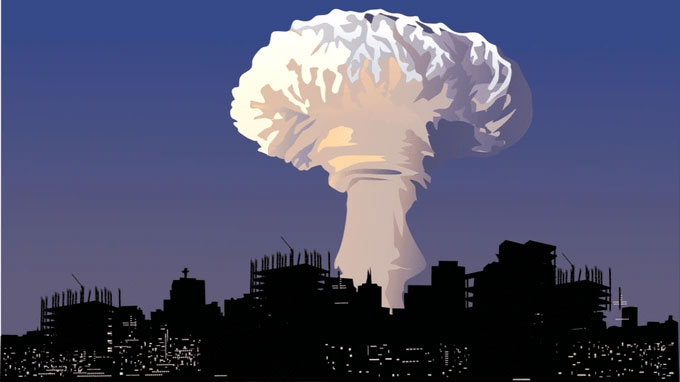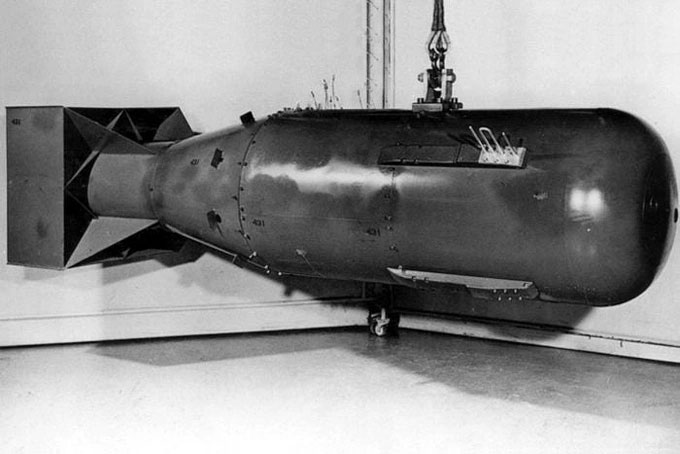If a nuclear disaster occurs, where is the safest place to take shelter?
A scientific study offers advice in the event of a nuclear disaster, including the worst places to take shelter.
The study, published in the journal Physics of Fluids , by Ioannis W. Kokkinakis and Dimitris Drikakis, looked specifically at the damage caused by shock waves generated by nuclear explosions. These waves are often powerful and fast enough to lift a person into the air.

Even though it's a scenario that may never happen, if an atomic bomb were to detonate, what would you do? (Illustration photo).
However, the study did not address the effects of radiation, which is widespread and lingers long after a blast. "Although shielding from a nuclear bomb is inevitable if you are in the damaged area, there are still precautions you should be aware of," the report said.
Based on supercomputer simulations, the team found locations that were significantly more dangerous than others (for shock waves). "The most dangerous locations in a house are windows, hallways and doors , " said author Ioannis Kokkinakis. "People should stay away from these locations and take shelter immediately."
Then, find a closed room with no windows, or a closet. This may be the best option in an emergency, the report said.

The atomic bomb was dropped on Hiroshima, Japan. (Photo: History).
Notably, it was previously believed that people sheltering inside buildings made of reinforced concrete could withstand the shockwaves from a nuclear explosion. However, this has been disproved by new research.
Accordingly, the narrow spaces inside rooms and buildings can actually contribute to the speed of shock waves, creating "winds" that can tear corners with a force 18 times greater than the human body weight.
"Our new study shows that high-speed waves are still a significant hazard, which can lead to serious injury or even death. However, it is better to be in a closed room than in a room with many windows and doors," stressed author Dimitris Drikakis .
In addition to the impact of shock waves, it is impossible not to mention the destructive power of the nuclear reactions of atomic bombs . In the case of early atomic bombs, such as the two bombs dropped on Hiroshima and Nagasaki, it was a chain of fission reactions.
Fission occurs when a neutron reacts with the nucleus of an isotope, such as uranium-235 or plutonium-239. This splits the nucleus and releases energy along with more neutrons, creating a chain reaction.

Atomic bombs create a huge destructive force over a large area. (Illustration: Getty).
The scary thing is that all of these processes almost instantly release a huge amount of energy, much more than any conventional explosive .
If a nuclear bomb detonated, people in the surrounding areas would have only seconds to move to a safe location before a shock wave hit.
Researchers hope that by improving our understanding of safe havens , victims in the affected area can stay alive in the event of a disaster.
- The safest place on earth to avoid nuclear disaster
- Inheritance of impenetrable nucleus underground
- If the zombie epidemic happens, what is the safest shelter? Statisticians have the answer!
- How to survive the nuclear disaster
- The secret of the bunker hidden over 300 rooms in the heart of Europe
- If a global pandemic breaks out, what is your safe place?
- Explore America's superior nuclear bomb shelter
- Inside the shelter of volunteers warning the British nucleus
- What can be eaten after a nuclear war disaster?
- Wild animals proliferate where ever a nuclear disaster occurred
- There are the safest scenarios for nuclear power plants
- Inside the nuclear bomb shelter in Japan
 'Fine laughs' - Scary and painful torture in ancient times
'Fine laughs' - Scary and painful torture in ancient times The sequence of numbers 142857 of the Egyptian pyramids is known as the strangest number in the world - Why?
The sequence of numbers 142857 of the Egyptian pyramids is known as the strangest number in the world - Why? History of the iron
History of the iron What is alum?
What is alum?